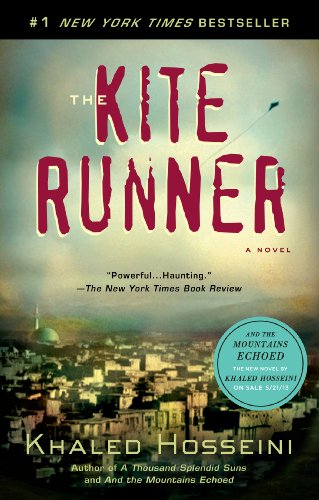All Nonfiction
- Bullying
- Books
- Academic
- Author Interviews
- Celebrity interviews
- College Articles
- College Essays
- Educator of the Year
- Heroes
- Interviews
- Memoir
- Personal Experience
- Sports
- Travel & Culture
All Opinions
- Bullying
- Current Events / Politics
- Discrimination
- Drugs / Alcohol / Smoking
- Entertainment / Celebrities
- Environment
- Love / Relationships
- Movies / Music / TV
- Pop Culture / Trends
- School / College
- Social Issues / Civics
- Spirituality / Religion
- Sports / Hobbies
All Hot Topics
- Bullying
- Community Service
- Environment
- Health
- Letters to the Editor
- Pride & Prejudice
- What Matters
- Back
Summer Guide
- Program Links
- Program Reviews
- Back
College Guide
- College Links
- College Reviews
- College Essays
- College Articles
- Back
The Kite Runner by Khaled Hosseini
THE Kite Runner Review
Author Khaled Hosseini described life in Afghanistan for the people who never experienced it. He went in depth with the culture so readers can understand and see how it turned to horror. In the book, he created a rich boy’s friendship with his father’s servant’s son and put it through startling experiences that hover around Afghanistan’s dilemmas.
Set in the mid-1970’s and onward, a twelve year old boy named Amir and his best friend though servant Hassan lived a playful life of reading stories, eating pomegranates, and flying kites. When the years progressed, the country started to fall. The Soviets invaded and the Taliban took over the empire. They shot missiles into streets, killed thousands and left many in poverty. Military populated the streets and people were killed or beaten out of boredom. Amir witnessed Hassan getting raped and didn’t tell anyone about it. He then became distant from Hassan, ruining their relationship even more and causing Hassan and his father to leave them. Soon Amir and his father Baba fled the country to America to start a new life. Amir married a woman who also lived a life of regrets. However, Amir learned shocking truths from a family friend and ends up going back to devastated Afghanistan. Amir then has to face deadly situations that almost killed him. This is the only way Amir can make up for his wronging.
Hosseini’s writing was beautiful and exhilarating. He mixed fiction and nonfiction life into a bowl of emotion. It showed fear and hatred boiling inside an innocent child that never stood up for anything; portraying him as a coward from other characters in the book. He taught the audience to stand up for others and don’t live a life of regret. Hosseini also taught that the world is not as it seems. That this is everyday life for some people and nobody is helping them. Not only did Hosseini display those things in his writing, he also displayed the feeling of approval and love most children yearn for. For example, Amir wanted his father to be proud of him, but his father didn’t consider him to be something worth of it so Amir did his best to earn his father’s love by ignoring matters like friendship and honesty. Throughout the book, all Amir wanted to be was like his father. And eventually he did become his father.
This book is not playful and childlike; it has mature and sensitive subjects that can cause agonizing and bitter moments. Though that’s what makes the book unique; the material is not censored or sugar-coated and gives a realization of reality. The book is an eye-opener, and Hosseini did a really good job at opening our eyes.
Similar Articles
JOIN THE DISCUSSION
This article has 0 comments.

